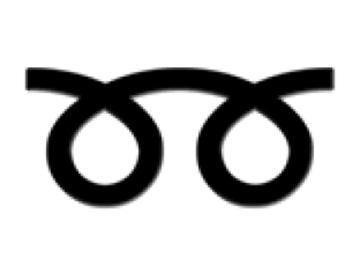
As recorded in The Adobe-Japan-6 Character Collection, it was released on 2004-03-05, and one of the glyphs that was added was CID+20958. According to the Adobe-Japan1-6 ordering file, its glyph name is freedial, and is assigned to the Dingbats FDArray element for the purpose of hinting. Of course, if you look for CID+20958 in Adobe Tech Note #5078, you can find it on the bottom of page 54, immediately to the right of CID+20957 that maps from U+26BD ⚽ SOCCER BALL, though it is blank. This is simply because Adobe does not have the rights to use NTT’s trademarked FreeDial mark. CID+20958 was included in Adobe-Japan1-6 for the benefit of font developers who do have the rights to use this mark, and can thus include the glyph in their fonts.
Although not open-sourced, I developed and continue to maintain U-PRESS-UTF32-H and U-PRESS2004-UTF32-H CMap resources that map as many Adobe-Japan1-6 glyphs from Kyodo News‘ (共同通信社) U-PRESS encoding as possible. The PUA (Private Use Area) code point U+F291 is mapped to CID+20958. U-PRESS includes additional characters that correspond to glyphs outside of Adobe-Japan1-6, and Iwata Corporation’s extension can be seen here.
According to Unicode’s DerivedAge.txt data file, U+27BF ➿ DOUBLE CURLY LOOP was added in Version 6.0 (October, 2010). On 2016-09-03, and thanks to Unicode, I finally added to the Adobe-Japan1-6 Unicode CMap resources a mapping from U+27BF to CID+20958.
U+27BF can be seen in the Full Emoji Data, and also has the UTR #51 property values Emoji and Emoji_Presentation.
